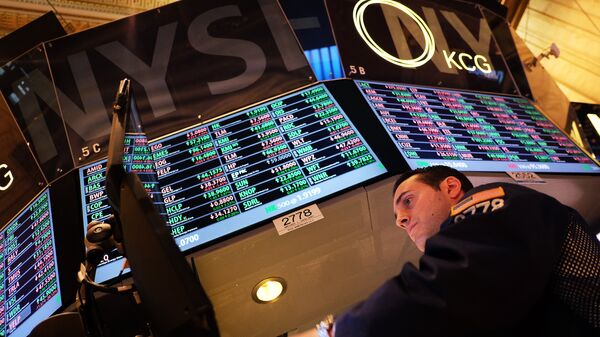Kristian Rouz — US manufacturing and mining suddenly dropped in May, the US Fed said on Monday, despite earlier optimistic growth projections, chiefly due to a stronger greenback, limiting overseas sales of US-made goods, and the lower profitability in oil production. Softer industrial data, contradicting last week's solid reports on services sector, suggest there are still severe limitations to US economic expansion, supported by the ongoing slowdown in governmental spending, the latter projected into 2016.
Last week's retail sales, joblessness, consumer confidence and small business activity reports were all optimistic, a sign of growth acceleration in Q2. US industrial production was expected to expand in May, in line with other macro parameters, however, Monday's report by the Federal Reserve was a disappointment.
Policymakers' sentiment during the US Fed policy meeting starting Tuesday will be affected by the data, meaning that the regulator is likely to take a more dovish stance at the looming hike in borrowing costs. All in all, the dollar's FX rate will go up at a steadier pace.
US industrial production was hurt by a decline in both manufacturing and mining. US multinationals have extracted less profits from their overseas operations due to a stronger dollar and weaker international demand, which prompted them to reduce output. The dollar advanced 13.2% against its major peers since last June, pushing US-made goods up in price.
Manufacturing contributes 12% to the US GDP, meaning it is far less important than the now-solid consumer demand, accounting for 71% of the US economy. Food and petrol production also fell in the US as low prices dictated some efficiency-adjustment.
"Manufacturers will continue to struggle with the impact of the dollar's rise for some time yet," Paul Ashworth of the Toronto-based Capital Economics said.
US manufacturing is expected to remain weak for several months into the future, and the looming hike in the base interest rate will have a negative impact on the export-driven enterprises. The US Fed is pushing through a transformation in the nation's economic model, which, being consumption-driven, should concentrate on US-made goods consumption. Therefore, America's industrial companies will have to adjust to the changing monetary environment by expanding their presence in the domestic market. Those who fail to adjust will lose in the mid-to-long-term.
The situation in mining sector is quite different. While US oil and natural gas output rose 0.5% in May, overall mining production fell 0.3%, its fifth consecutive month of losses. Production efficiency is on the rise in the US energy sector, as output is rising amidst a 7.9% decline in drilling and derricks' servicing in May, added to a 14.5% slump the previous month. US utilities also rose 0.2% in May.
All the alarming tendencies are in line with the Fed's policy — the United States is becoming increasingly isolationist economically, consciously sacrificing part of their economy dependent on overseas markets. At the same time, as the monetary policy is retuning towards 'normality', US fiscal policy is becoming more in line with that of a market economy. US governmental spending is projected to add only 3.1% in fiscal 2016 year, well below this year's 4.6%, according to data by the National Association of State Budget Officers (NASBO).
That said, slowly but surely, America is heading to a normality of a domestically driven economy of entrepreneurship and private incentive, even though there is, however, significant concern stemming from the government's excessive regulative involvement



